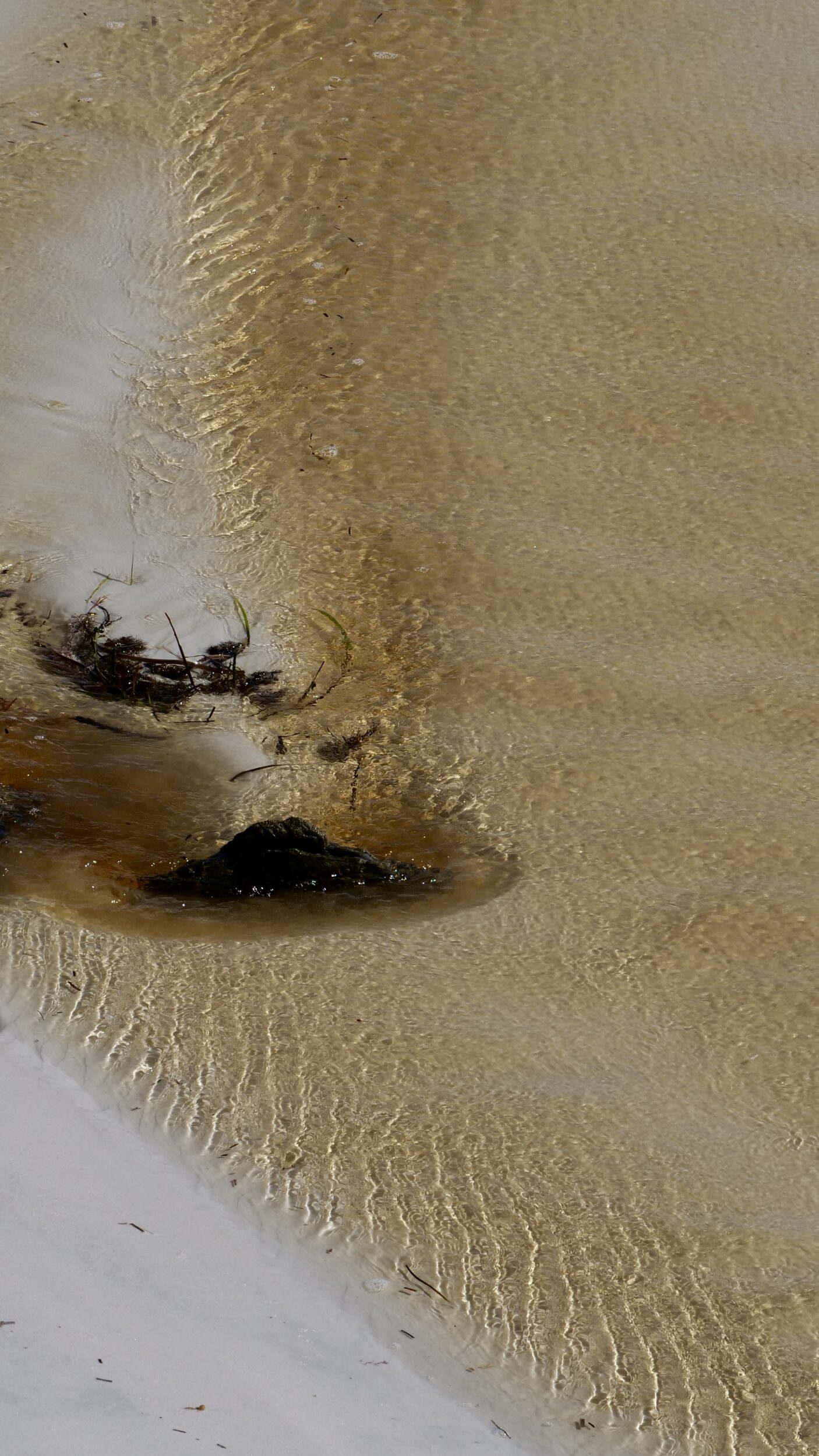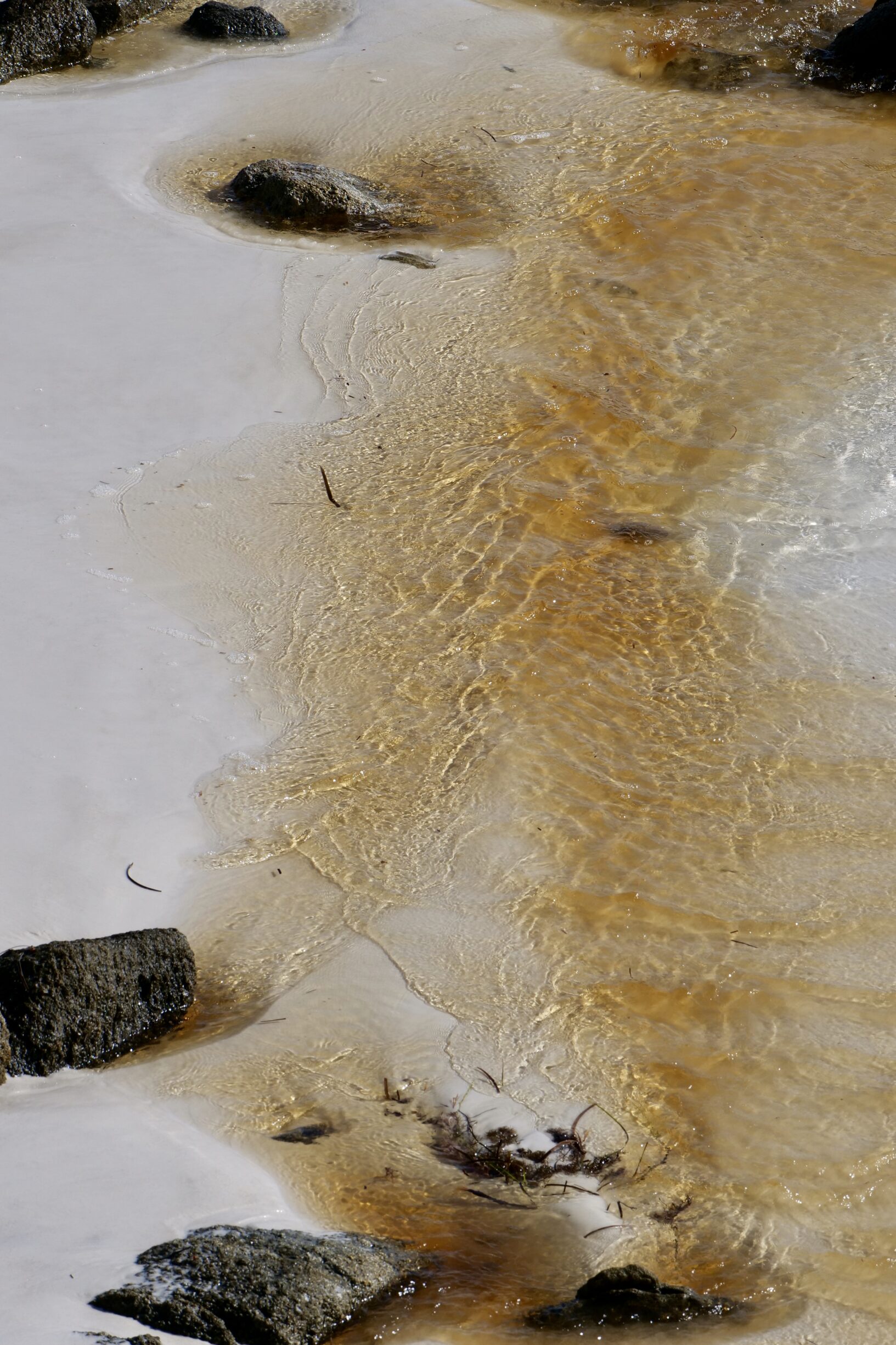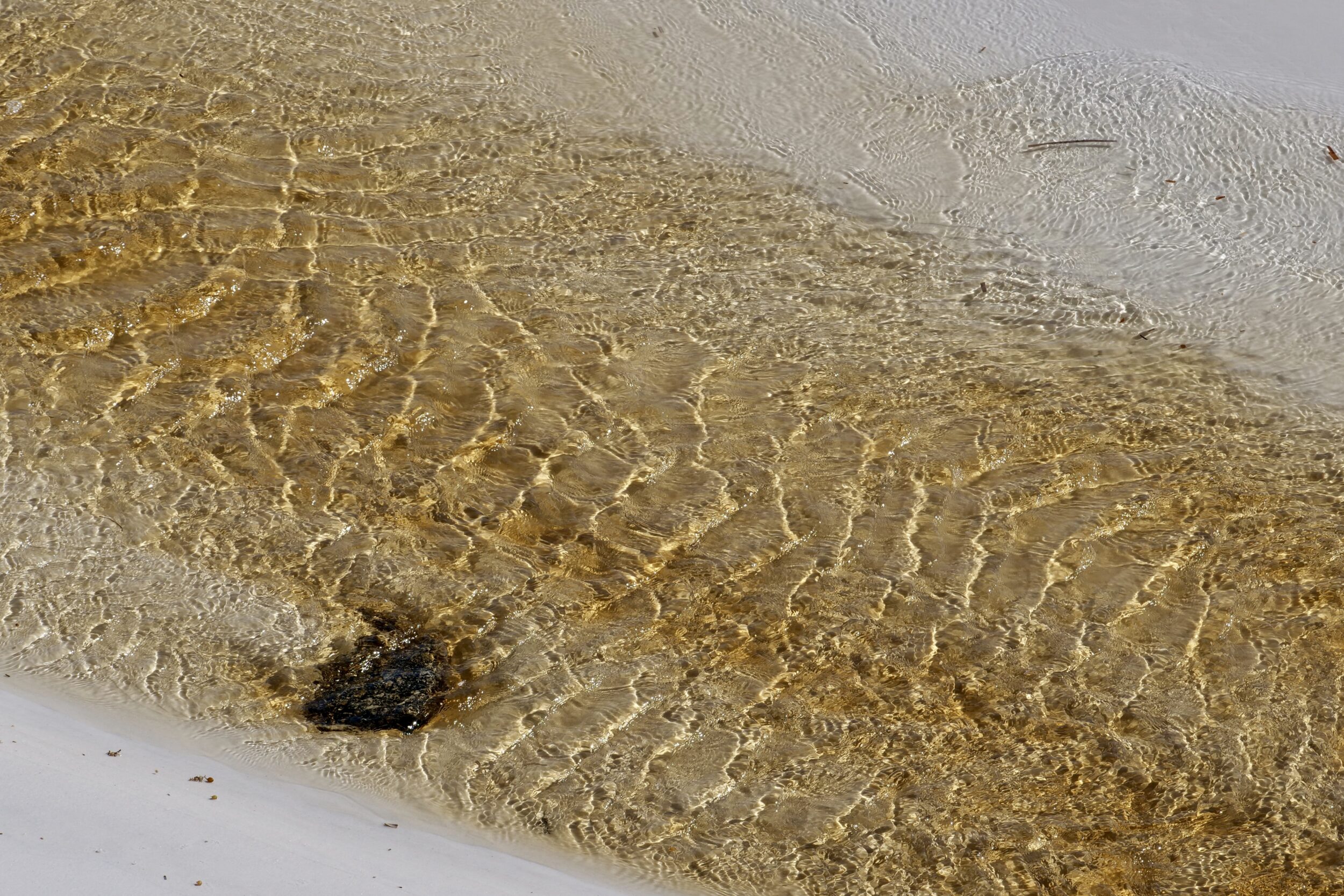After taking in the panoramic view across Thistle Cove – as featured in this series’ previous chapter – we walked down to the beach.
This post’s photos offer a closer view of the “stained” water and sand that were visible in the bottom right side of #16’s photo.
You are looking at a freshwater spring’s waters flowing onto the beach at Thistle Cove.

In 1802 the explorer/navigator Matthew Flinders was delighted to “discover” such an easily-accessible supply of potable water.
Its “discolouration” has nothing to do with any pollution; it is simply tannin, from the local vegetation, as dissolved by Cape Le Grand National Park’s various wetlands.
As well as some of the world’s most glorious ocean beaches, Cape Le Grand is richly endowed with granite rocks, hills and headlands…and an incredible array of WA-endemic flowering plants.
As is generally true in Australia, more than a few of those plants are decidedly “prickly” or “thorny”, but that fact has nothing to do with Thistle Cove’s name.
Flinders named it after his expedition’s shipmaster, John Thistle.
For many millennia before Europeans reached these shores, indigenous humans were already drinking from the springs that flow onto Thistle Cove’s and Lucky Bay’s sands.
Those springs are the primary reason kangaroos frequent these beaches.

Click this for more about Thistle Cove.
